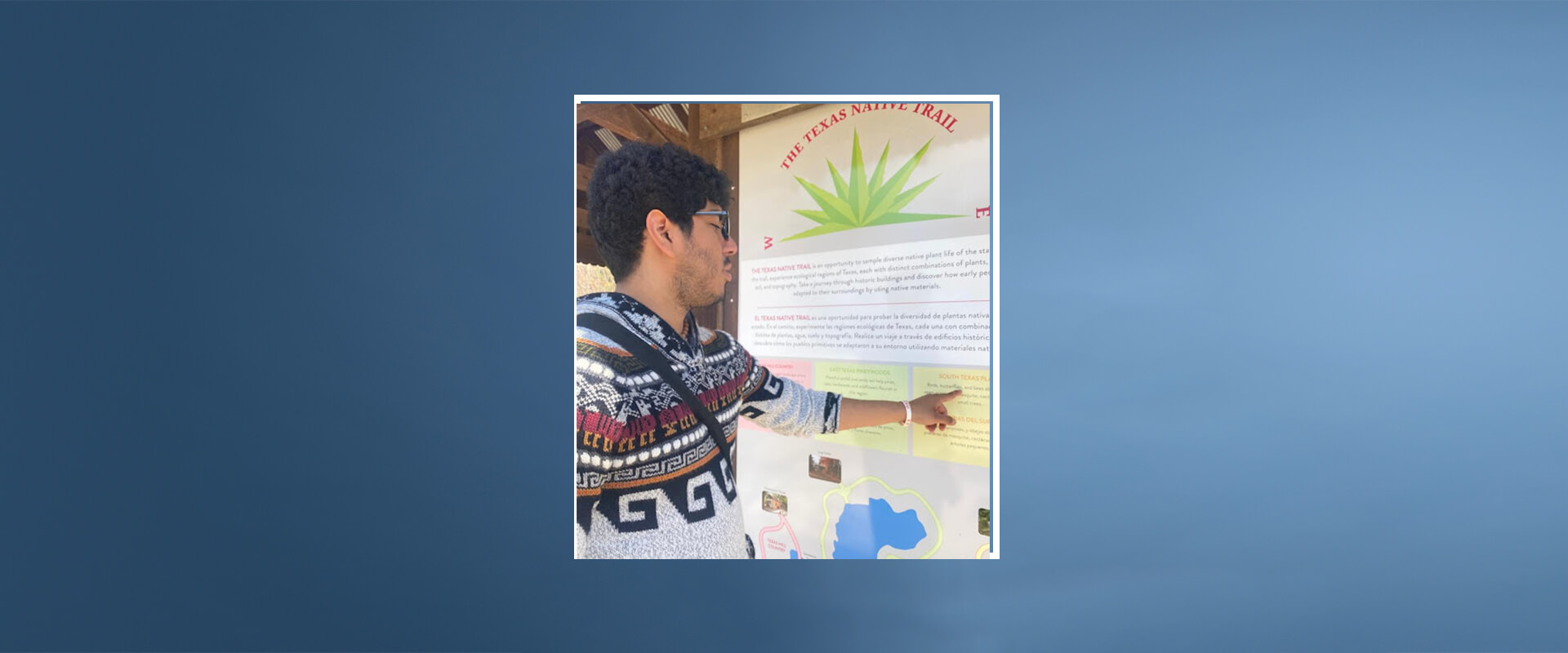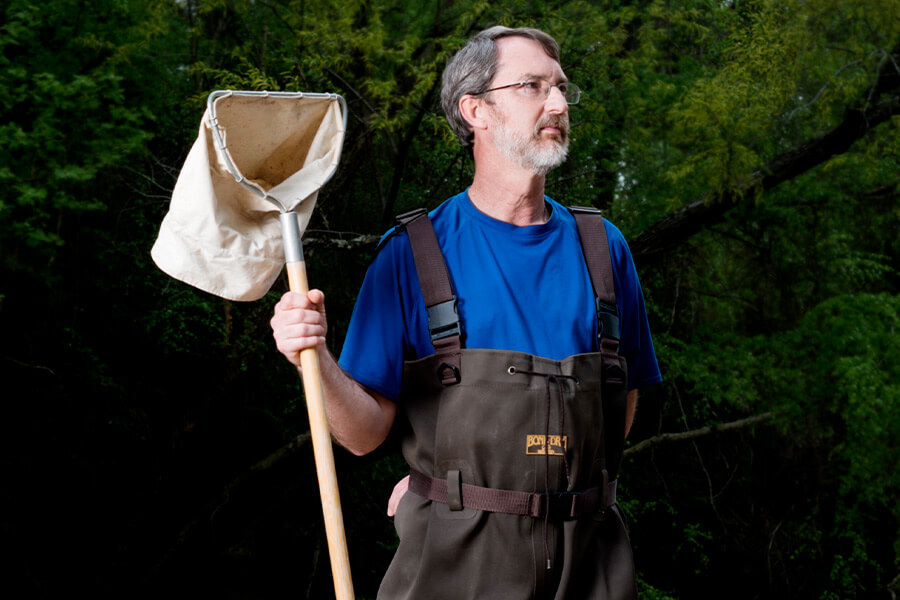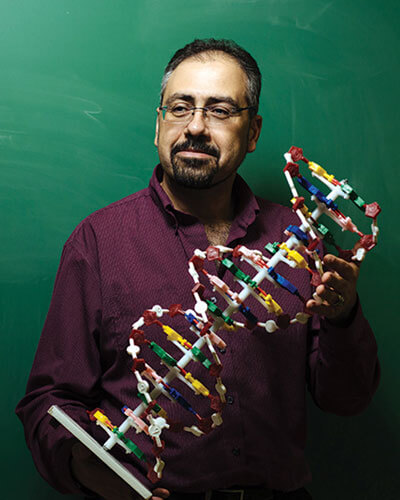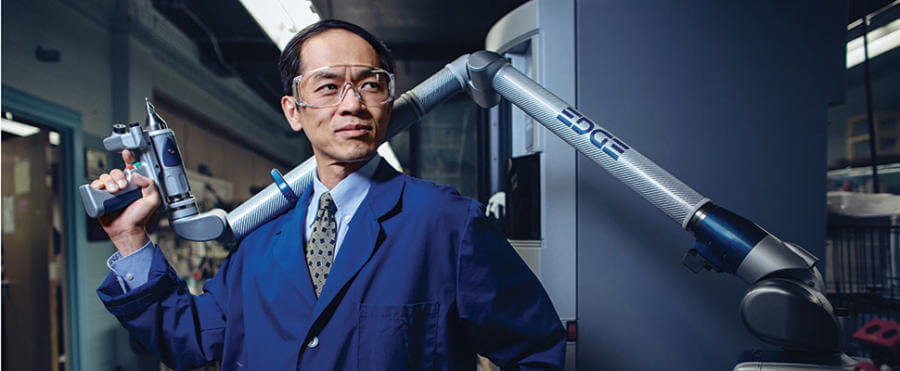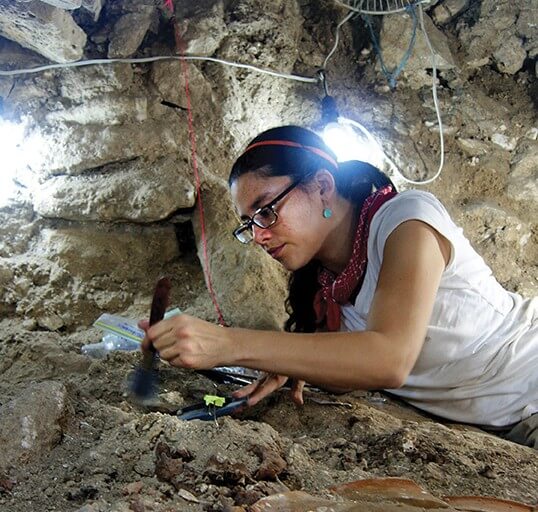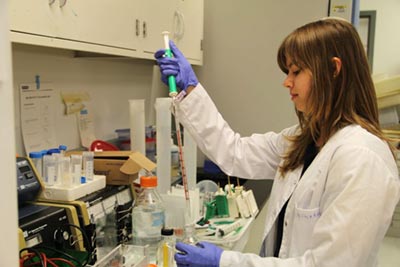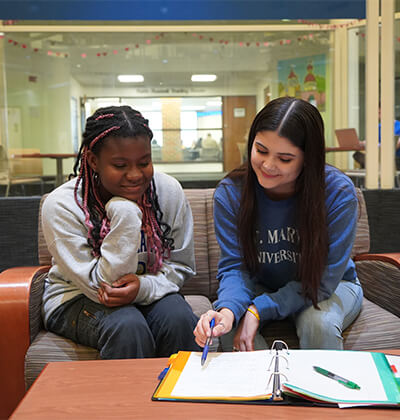Science and Tech
A Champion for Clean Water
When Albert Hindrichs (B.A. '83) talks to community members about water sustainability, he often asks the same question: "Who thinks water quality is better today than it was 40 years ago?"
Environmental Science majors introduce 5th graders to nature
Most children would rather be outside than in a classroom anyway, so when a group of Environmental Science majors from St. Mary’s University treated students from Ingram Independent School District to a day of outdoor learning last March, they were all smiles.
In Search of a Cure
Ahmad Galaleldeen, Ph.D., was a doctoral student when his faculty mentor showed him a graphic of what appeared to be colorful abstract patterns. In fact, it was a brand new molecular diagram of an important enzyme, and Galaleldeen was among the first to see it.
A 3-D Revolution
The technology of 3-D printers has been common in the news, with their ability to make just about anything from dental prosthetics to acoustic guitars. But what you may not know is that St. Mary’s has had its own 3-D printer for years.
Game On: Graduate Computer Science Professor Puts the Fun Back in Learning
For Carol Luckhardt Redfield, Ph.D., teaching isn’t a one-way process. She believes that effective teaching — and learning — requires students to be engaged in the effort. Considering how much of her time and teaching centers on game development, that makes sense.
Alumna Unearths an Ancient Warrior Queen
Olivia Navarro-Farr, Ph.D. (B.A. ’98), and a team of archaeologists made a career-defining discovery in the summer of 2012: In a collapsed chamber in Guatemala was the tome of Lady K’abel, a powerful Maya queen who ruled the ancient city of El Perú-Waka’ with her husband more than 1,300 years ago.
Engineering a Better World
Among her areas of study, Amber McClung, Ph.D., lists creating models for high-temperature polymer-matrix composites. Stay with me here.
Professor Asks, “Why Do Mammals Have Big Brains?”
Scientists have wondered for decades why mammals’ brains are so large relative to their body size, but for the most part all they could do was guess. The fossils that could give paleontologists clues to the earliest development of the mammalian brain are hard to come by.
The Secret to Their Success
For almost 30 years, a federally funded program with a long name and lofty goals has been quietly helping talented St. Mary’s University students find their purpose in research careers toward which they might not otherwise have gravitated.
From the Ground Up
You could say that watching grass grow is as exciting as, well, watching grass grow. But for Zack Valdez (B.S.’10), it is not only stimulating work but also the focus of his high-profile research fellowship from the National Science Foundation.
Form Meets Function
Biological sciences professor Marshall McCue, Ph.D., wants to learn not just how living things work, but why they work the way they do. Why can a snake survive without food for up to one year whereas some birds can only tolerate one day of fasting? What happens when bats sleep?
Pursuing Her Passion
Ewa Nowara, a junior Biophysics major and a citizen of Poland, had wanted very much to perform undergraduate research at St. Mary’s. However, because most undergraduate research is funded by federal agencies whose primary mission is to aid American students, professors are often bound by strict hiring criteria that exclude international students.
Read More Stories
St. Mary’s Law clinic students help keep our community housed
Eviction prevention is the focus of the St. Mary's University School of Law Consumer Protection Clinic and the Real Estate Clinic.
Greehey School of Business connects students through mentorship
The Greehey School of Business Mentorship Program, open to all business students, is a voluntary program that allows students to seek additional support.
St. Mary’s undergraduates embrace mock trial team
During his internship at the Bexar County Courthouse, Eduardo Saucedo Moreno struck up a conversation with a local attorney about the lack of a mock trial team for undergraduate students at St. Mary’s University. The interaction sparked an interest that helped him establish a program at St. Mary's University.

